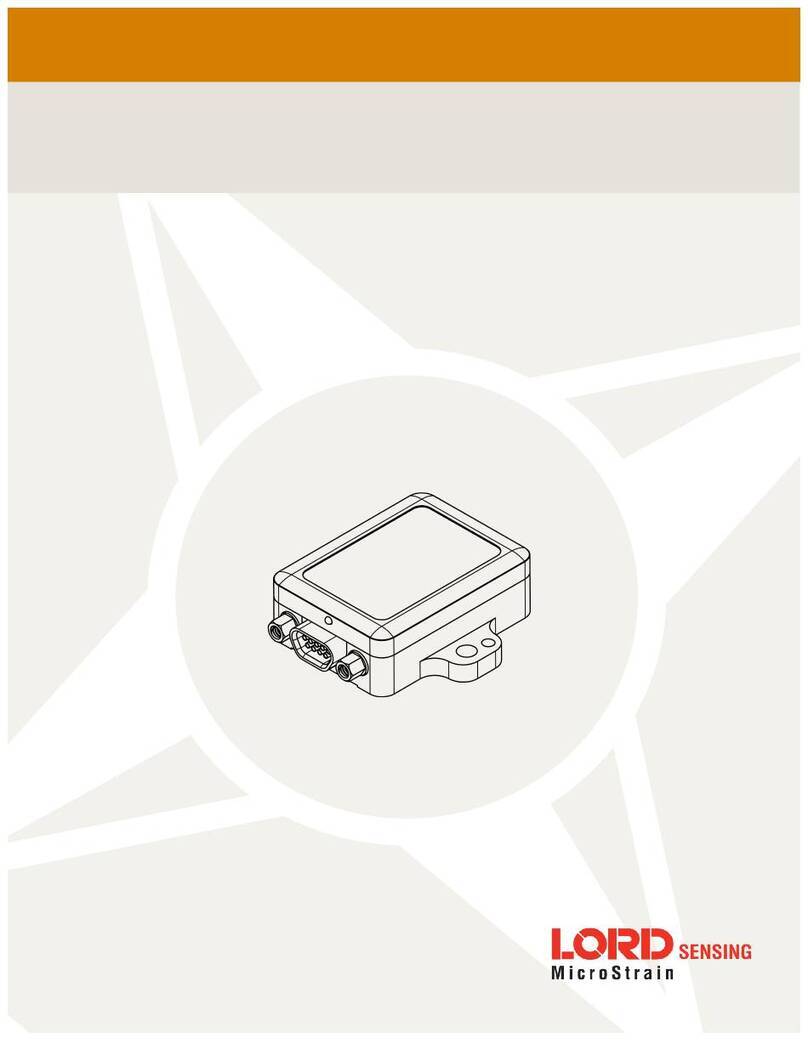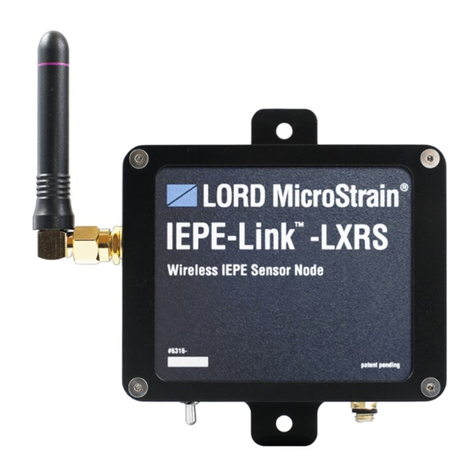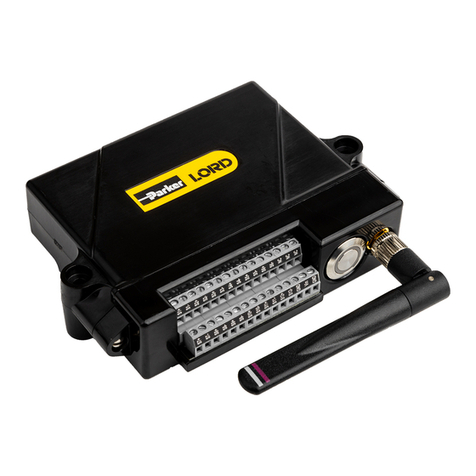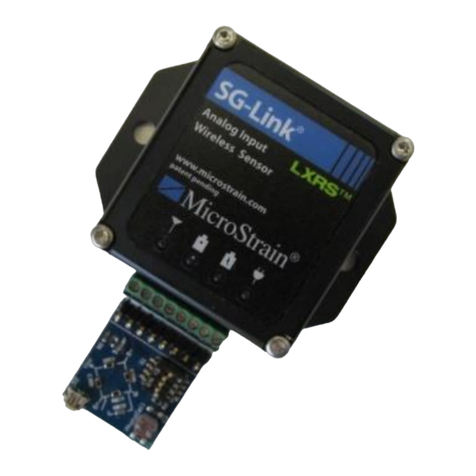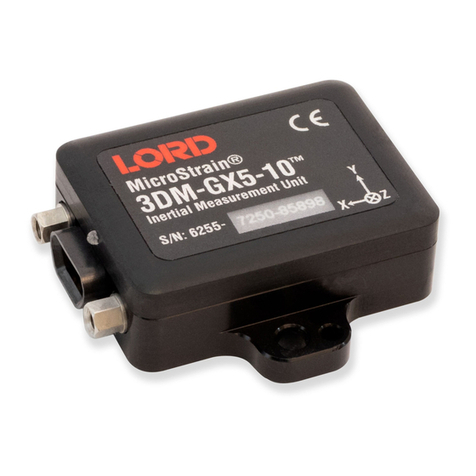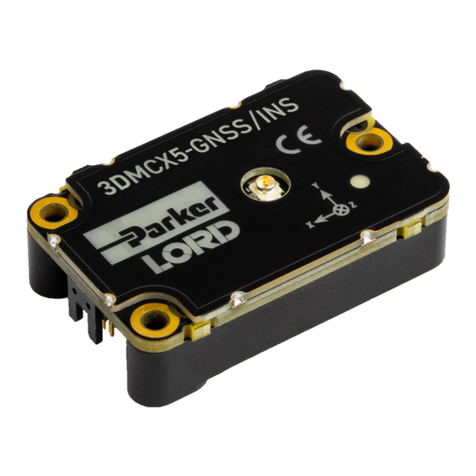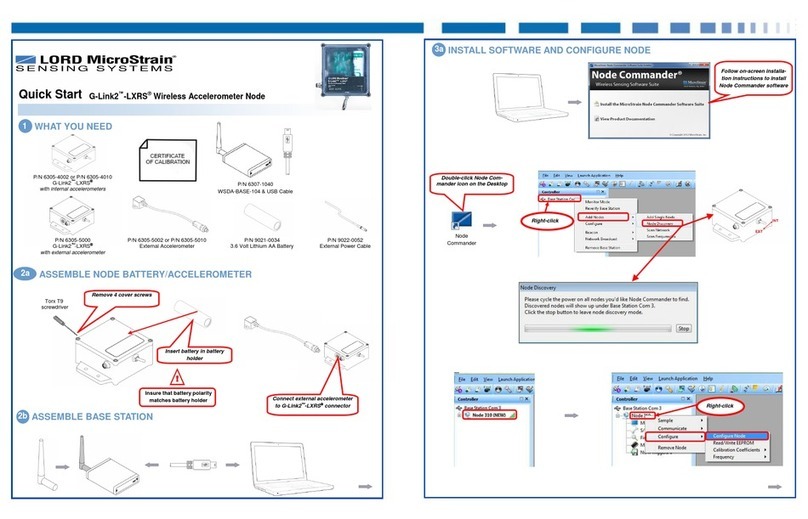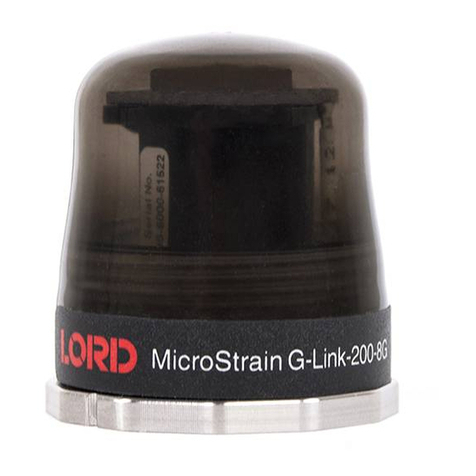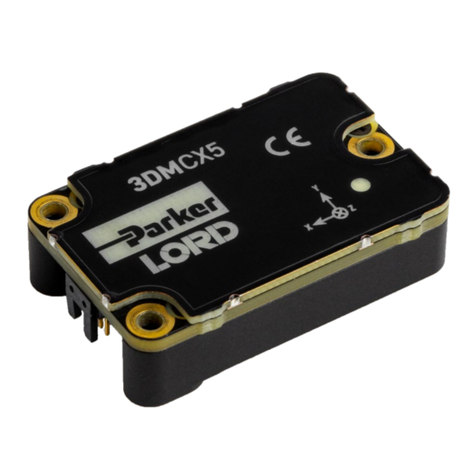
3DM®-CV5-15 User Manual
1. System Family Overview
The LORD Sensing 3DM-CV5 family of industrial-grade, board-level inertial sensors provides a wide
range of triaxial inertial measurements and computed attitude and navigation solutions.
In all models, the Inertial Measurement Unit (IMU) includes direct measurement of acceleration and
angular rate, and some also offer atmospheric pressure readings. In models that include a Kalman Filter,
sensor measurements are processed through an Extended Kalman Filter (EKF) to produce highly
accurate computed outputs. The 3DM- CV5 features include a very stable gyro and low noise
accelerometers. The M7 and M4 dual Cortex processors run a new Auto-Adaptive EKF.The Kalman filter
enables compensation for magnetic and linear acceleration anomalies as applicable to the model. It also
provides sensor bias tracking, auto-zero update options (ZUPT), and user adjustable sensor noise
factors. All sensors are fully temperature-compensated and calibrated over the full operating temperature
range.
The use of Micro-Electro-Mechanical System (MEMS) technology allows for small, lightweight devices.
Sensors are integrated into customer systems using serial communication protocols such as RS232 and
USB. The LORD Sensing MIPMonitor software can be used for device configuration, real time
measurement monitoring, and data recording. The LORD Sensing MIPData Communications Protocol
(DCP) that is used to communicate with LORD Sensing inertial sensors is also available for users who
want to develop customized software solutions. Because of the unified set of commands across the
sensor family, it is easy to migrate code from one inertial sensor to another.
Common applications of LORD Sensing inertial sensor products include vehicle health monitoring,
platform stabilization, down- hole and drilling operations, and inertial navigation systems such as
unmanned air and ground vehicles and personal navigation systems.
6
